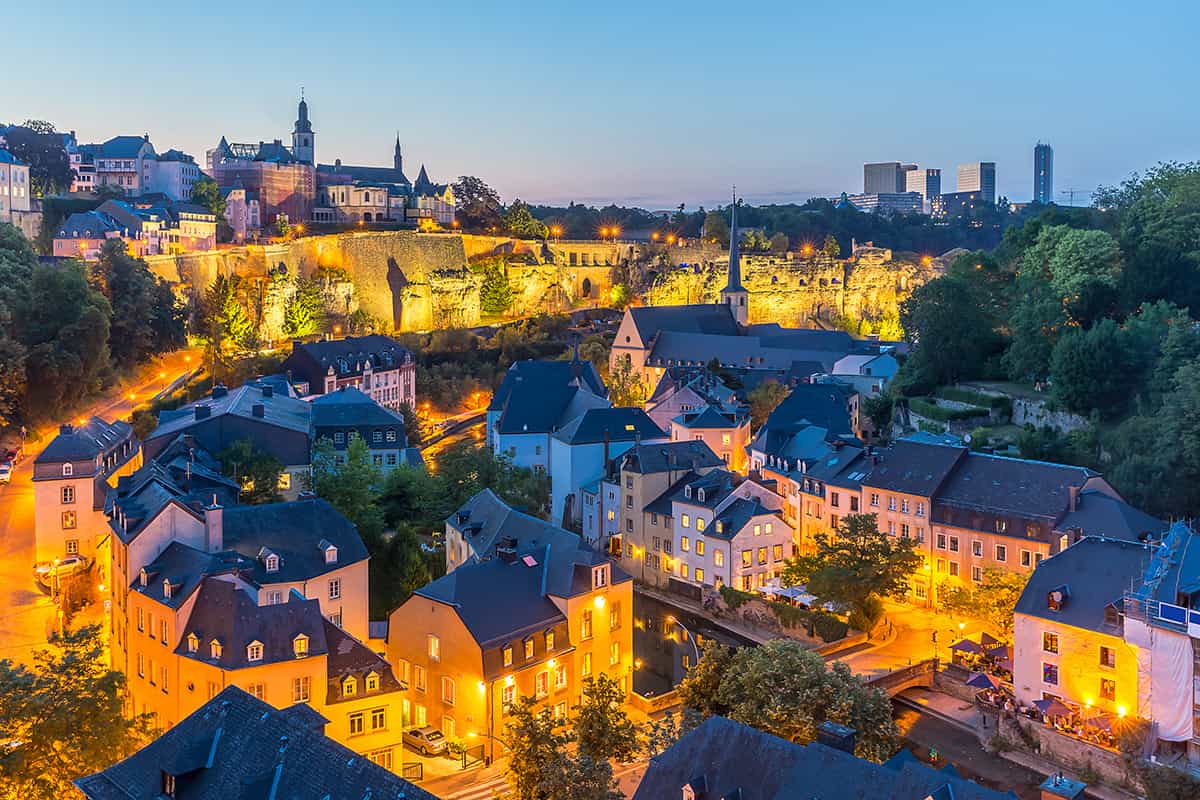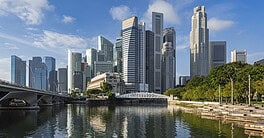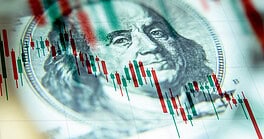Many of the world’s richest countries are also the world’s smallest: the pandemic, the global economic slowdown and geopolitical turmoil have barely made a dent in their huge wealth.
What do people think when they think about the world’s richest countries? And what comes to mind when they think about the world’s smallest countries? Many people would probably be surprised to find that many of the planet’s wealthiest nations are also among the tiniest.
Some very small and very rich countries—like San Marino, Luxembourg, Switzerland and Singapore—benefit from having sophisticated financial sectors and tax regimes that attract foreign investment, professional talent and large bank deposits. Others like Qatar and the United Arab Emirates have large reserves of hydrocarbons or other lucrative natural resources. Shimmering casinos and hordes of tourists are good for business too: Asia’s gambling haven Macao remains one of the most affluent states in the world despite having endured almost three years of intermittent lockdowns and pandemic-related travel restrictions.
But what do we mean when we say a country is “rich,” especially in an era of growing income inequality between the super-rich and everyone else? While gross domestic product (GDP) measures the value of all goods and services produced in a nation, dividing this output by the number of full-time residents is a better way of determining how rich or poor one country’s population is relative to another’s. The reason why “rich” often equals “small” then becomes clear: these countries’ economies are disproportionately large compared to their small number of inhabitants.
However, only when taking into account inflation rates and the cost of local goods and services can we get a more accurate picture of a nation’s average standard of living: the resulting figure is what is called purchasing power parity (PPP), often expressed in international dollars to allow comparisons between different countries.
Should we then automatically assume that in nations where PPP is particularly high the overall population is visibly better off than in most other places in the world? Not quite. We are dealing with averages and within each country structural inequalities can easily swing the balance in favor of those who are already advantaged.
The COVID-19 pandemic lifted the veil on these disparities in ways few could have predicted. While there is no doubt that the wealthiest nations—often more vulnerable to the coronavirus due to their older population and other risk factors—had the resources to take better care of those in need, those resources were not equally accessible to all. Furthermore, the economic fallout of lockdowns hit low-paid workers harder than those with high-paying occupations and that, in turn, fueled a new kind of inequality between those who could comfortably work from home and those who had to risk their health and safety by traveling to job sites. Those who lost their jobs because their industries shut down entirely found themselves without much of a safety net—large holes in the most celebrated welfare systems in the world were exposed.
Then as the pandemic subsided, inflation surged globally, Russia invaded Ukraine, exacerbating the food and oil price crisis. The Israel-Hamas followed, bringing more disruption to supply chains and commodity and energy markets. Lower-income families always tend to be hit the hardest, as they are forced to spend greater proportions of their incomes on basic necessities—housing, food and transportation—whose prices are more volatile and tend to increase the most.
In the 10 poorest countries in the world, the average per-capita purchasing power is less than $1,500 while in the 10 richest it is over $110,000, according to data from the International Monetary Fund (IMF).
A word of caution about these statistics: the IMF has warned repeatedly that certain numbers should be taken with a grain of salt. For example, many nations in our ranking are tax havens, which means their wealth was originally generated elsewhere which artificially inflates their GDP. While a global deal to ensure that big companies pay a minimum tax rate of 15% was signed in 2021 by more than 130 governments (a deal that has yet to be implemented due to the opposition of legislators and politicians in many of them), critics have argued that this rate is barely higher than that tax havens like Ireland, Qatar and Macao. It is estimated that over 15% of global jurisdictions are tax havens and the IMF has estimated further that by the end of the 2020s, about 40% of global foreign direct investment flows could be attributed to shrewd tax-evading tactics, up from 30% in the 2010s. In other words: these investments pass through empty corporate shells and bring little or no economic gain to the population where the money ends up.
THE 10 RICHEST COUNTRIES IN THE WORLD:
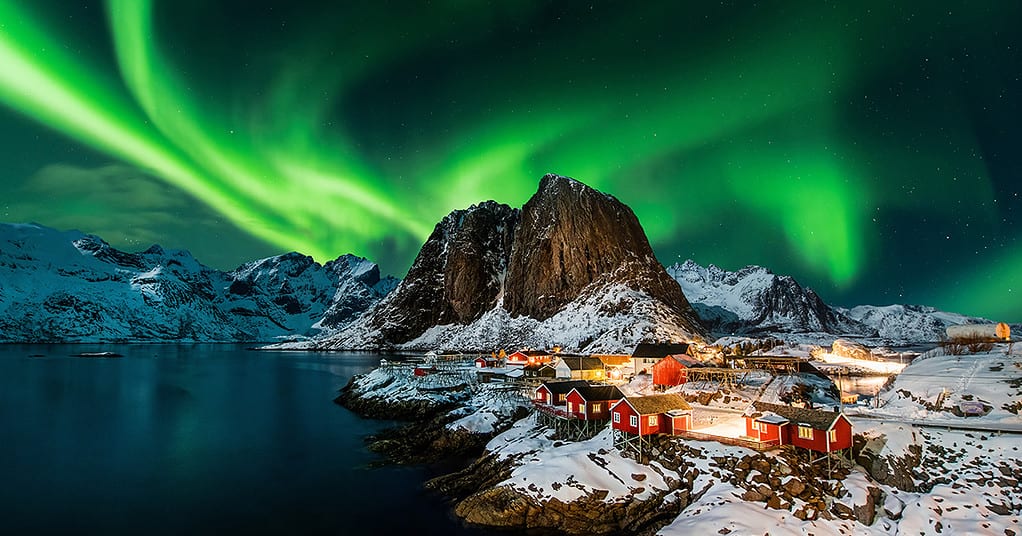
10. Norway🇳🇴
Current International Dollars: 82,832 | Click To View GDP & Economic Data
Since the discovery of large offshore reserves in the late 1960s, Norway’s economic engine has been fueled by oil. As Western Europe’s top petroleum producer, the country has benefited for decades from rising prices.
Until it didn’t: prices crashed at the beginning of 2020, then the global pandemic ensued—and the krone was sent into freefall. In the second quarter of that year, Norwegian GDP fell by 6.3 %, the biggest decline in half a century and possibly since World War Two.
Does that mean Norwegians became significantly less wealthy than they were before the pandemic? Certainly not. After the initial shock, the economy gradually pared the losses and rebounded.
Further, when it comes to any unforeseen economic problem, Norwegians can always count on their $1.4 trillion sovereign wealth fund, the world’s largest. Not only that, unlike many other rich nations, Norway’s high per capita GDP figures are a reasonably accurate reflection of the average person’s economic well-being. The country boasts one of the smallest income inequality gaps in the world.
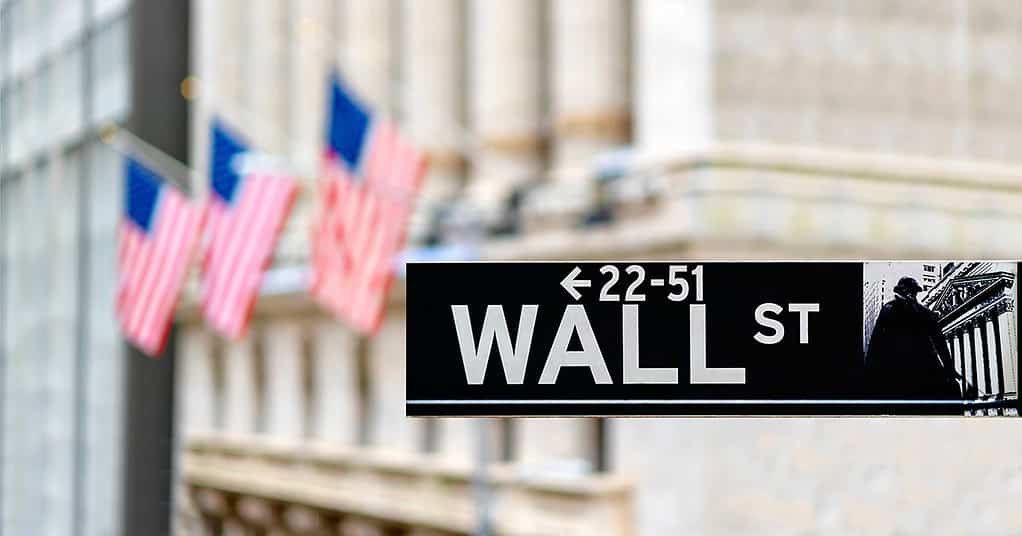
9. United States🇺🇸
Current International Dollars: 85,373 | Click To View GDP & Economic Data
Did we say that the wealthiest countries are also the smallest? That is certainly not the case with the United States, which first entered the top 10 list in 2020 after hovering just beyond tenth place for the better part of the past two decades.
Its surge, at least initially, was largely due to pandemic-related socioeconomic measures, which boosted income and spending, and to falling energy prices, which pushed petroleum-based economies like Qatar, Norway and the United Arab Emirates down several rankings, while Brunei fell out of the top 10 entirely.
Still, the country has since managed to build on the momentum and maintain its presence in the highest tier of the list. Not only did the US have its shortest recession on record in early 2020, lasting only two months, but its economy is now booming. In April, the IMF upgraded its 2024 projections for US economic growth to 2.7% (+0.6% higher than it forecasted just a few months earlier), but the performance of the United States—according to the Fund—will be this year “a major driver of global growth.”
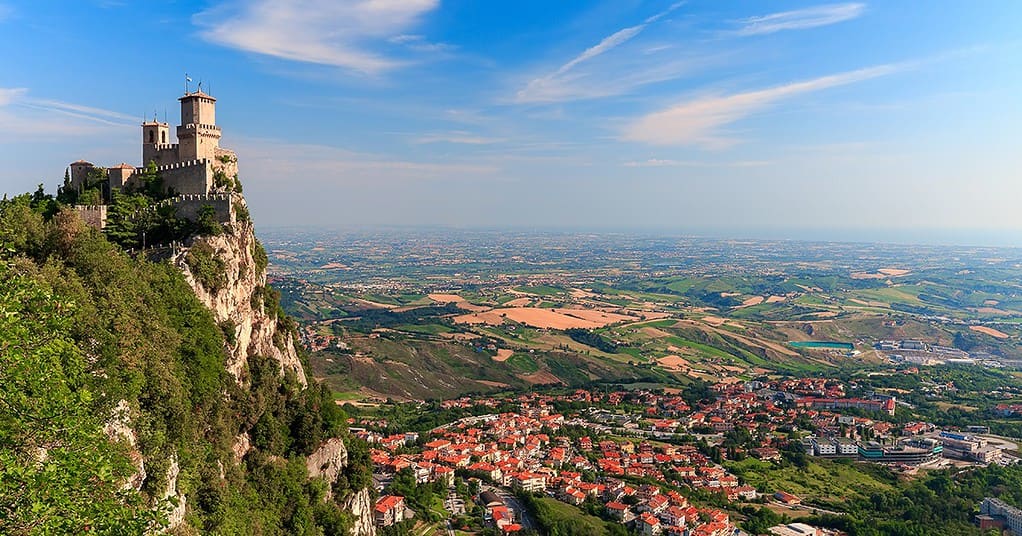
8. San Marino🇸🇲
Current International Dollars: 86,989 | Click To View GDP & Economic Data
Tiny San Marino is the oldest republic in Europe and the fifth smallest country on the map. It may have only 34,000 citizens, but it is among the wealthiest citizenry in the world. It helps that income tax rates are very low, at about one-third of the EU average. Nonetheless, San Marino is working towards harmonizing its fiscal laws and regulations with those of the European Union (EU) and international standards.
The tiny nation showed remarkable resilience during the pandemic and after amid tight monetary conditions and the energy crisis, with its tourism industry and manufacturing sector turning especially strong performances.
7. Switzerland🇨🇭
Current International Dollars: 91,932 | Click To View GDP & Economic Data
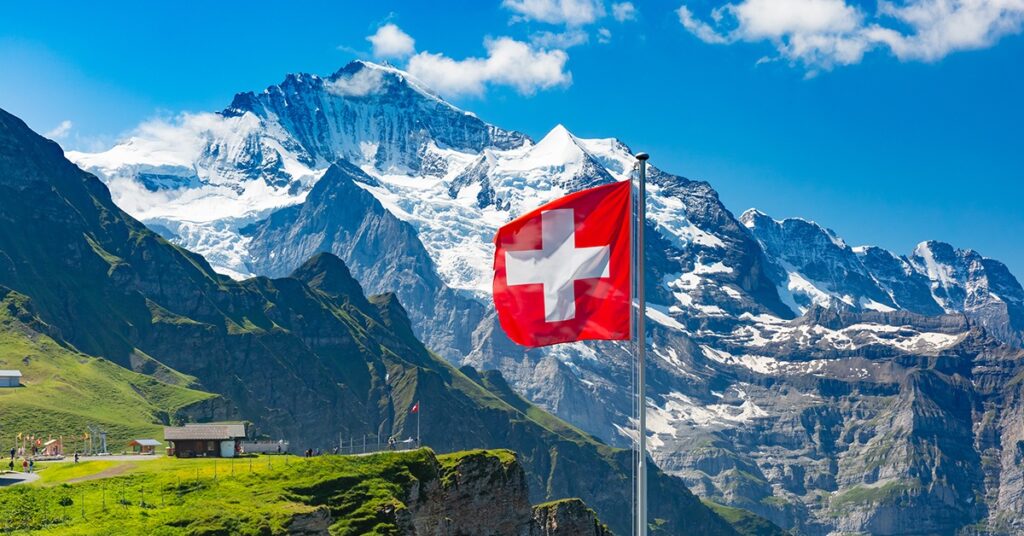
White chocolate, the bobsleigh, the Swiss Army knife, the computer mouse, the immersion blender, velcro, and LSD are just some of the noteworthy inventions brought to the world by Switzerland. This country of about 8.8 million people owes much of its wealth to banking and insurance services, to tourism, and to the export of pharmaceutical products, gems, precious metals, precision instruments (think watches) and machinery (medical apparatuses and computers).
According to the 2023 Global Wealth Report by Credit Suisse, Switzerland once again came out on top when it comes to the mean average wealth per adult at a whopping $685,230. Furthermore, roughly one adult in six owns assets worth more than one million U.S. dollars. Is it really a surprise that Switzerland has the highest density of millionaires in the world?
But does that mean the Swiss is immune from economic woes? Not only the pandemic had a significant impact on the economy, but—due to the country’s heavy reliance on imports of oil and gas from Russia—the war in Ukraine led to a surge in energy prices and triggered supply chain disruptions. Further, in 2022 Credit Suisse nearly imploded before a government-engineered rescue by its long-time rival, UBS Group, pulled it back from the edge. The demise of Credit Suisse has shaken the country, damaging Switzerland’s reputation as a secure and reliable global banking center.
And that’s not all: last year, in a bid to curb inflation, the Swiss National Bank (SNB) raised its interest rate from -0.75% to 1.75%. Such a move had its consequences, including a surge in investment costs and a slowdown in economic growth—this, while the country was already experiencing a slump in exports, particularly to Germany, Switzerland’s second trading partner after the US, currently facing its own set of economic challenges.
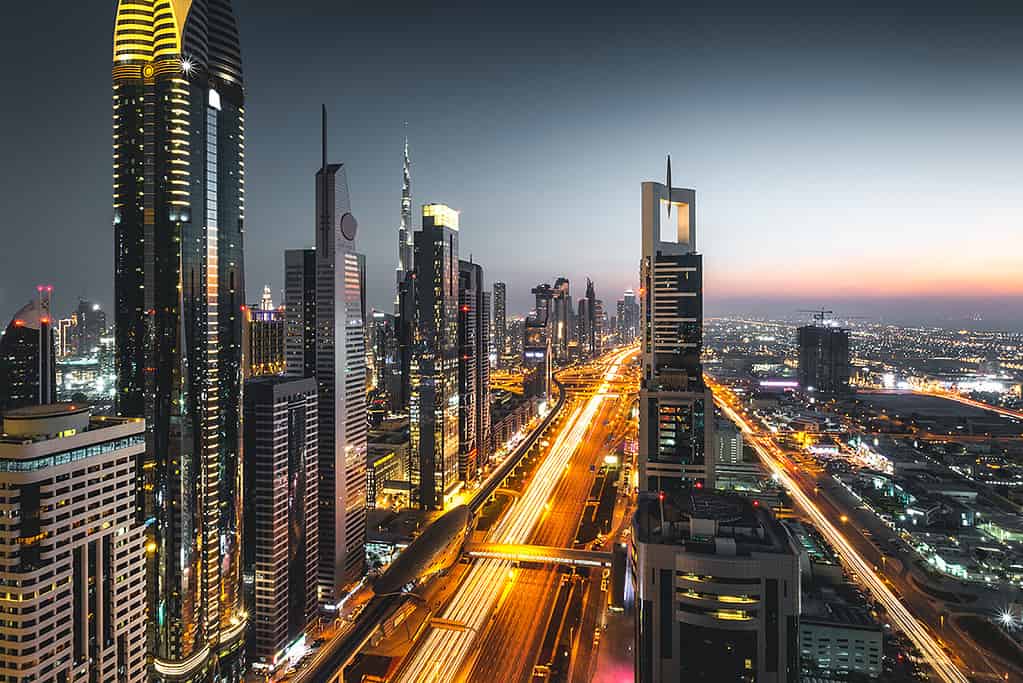
6. United Arab Emirates🇦🇪
Current International Dollars: 96,846 | Click To View GDP & Economic Data
Agriculture, fishing and trading pearls: these used to be the economic mainstays of this Persian Gulf nation. Then oil was discovered in the 1950s and everything changed. Today, the United Arab Emirates’ highly cosmopolitan populationenjoys considerable wealth. Traditional Islamic architecture mixes with glitzy shopping centers and workers come from all over the world lured by tax-free salaries and year-round sunshine; only about 20% of the people living in the country are actually locally-born.
The UAE’s economy is also becoming increasingly diversified. Outside of the traditionally dominant hydrocarbon sector, tourism, construction, trade and finance are major industries. This is not to say that the UAE was not impacted by the pandemic and the concomitant fall of oil prices: quite the contrary. Incredible as it may seem, the UAE briefly slipped out of the IMF’s ranking of the richest countries globally for the first time in decades. Yet fossil fuels have not gone out of fashion: as soon as energy prices recovered, the UAE quickly regained its historic position among the top 10 richest countries in the world.
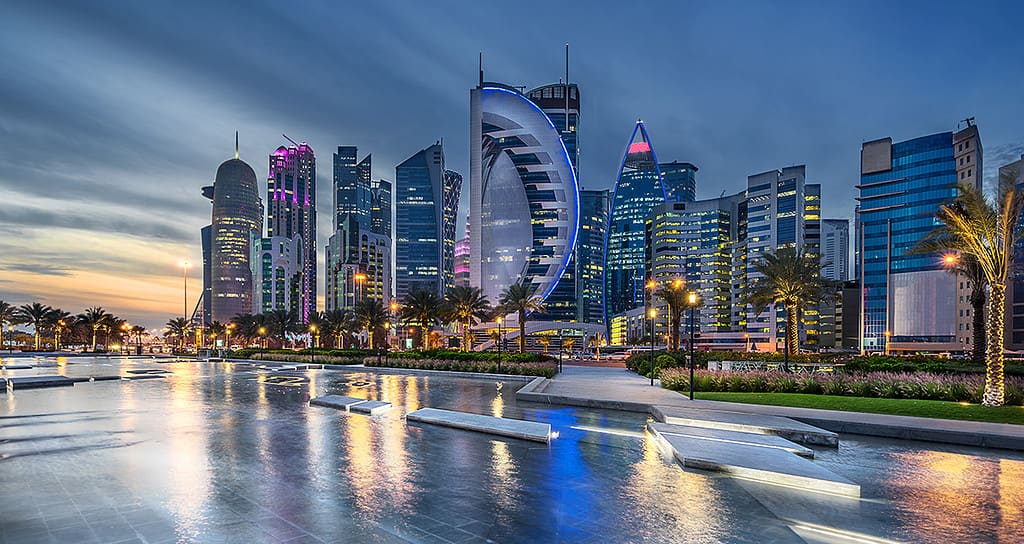
5. Qatar🇶🇦
Current International Dollars: 112,283 | Click To View GDP & Economic Data
Despite the recent recovery, oil prices have on average declined since the mid-2010s. In 2014, the per-capita GDP of a Qatari citizen was over $143,222; one year later, it plunged significantly and remained below the $100,000 mark for the next five years. However, that figure has gradually grown, increasing by about $10,000 each year.
Still, Qatar’s oil, gas and petrochemical reserves are so large and its population so small—just 3 million—that this marvel of ultramodern architecture, luxury shopping malls and fine cuisine has managed to stay atop the list of the world’s richest nations for 20 years.
No rich country, however, is without its problems. With only about 12% of the country’s residents being Qatari nationals, the initial months of the pandemic saw Covid-19 spreading rapidly among low-income migrant workers living in crowded quarters, triggering one of the highest rates of positive cases in the region. Then, falling energy prices meant falling government and private sector revenues. An export-oriented economy, Qatar also suffered from the disruption in global trade caused by the war in Ukraine. Later on, the conflict in Gaza sparked renewed fears and uncertainty across the Middle East. Still, until now, the economy has proven to be sufficiently resilient. It is projected to grow by around 2% in 2024 and 2025.
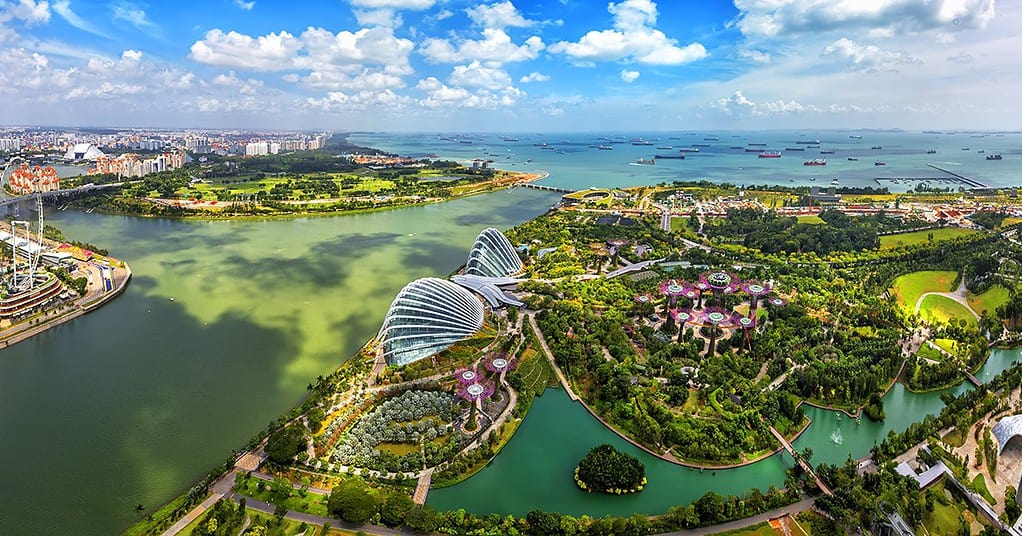
4. Singapore🇸🇬
Current International Dollars: 133,737 | Click To View GDP & Economic Data
With assets of about $16 billion, the richest person living in Singapore is an American: Eduardo Saverin, the co-founder of Facebook, who in 2011 left the U.S. with 53 million shares of the company and became a permanent resident of the island nation. Like many other fellow millionaires and billionaires, Saverin did not choose it just for its urban attractions or natural gateways: Singapore is an affluent fiscal haven where capital gains and dividends are tax-free.
But how did Singapore manage to attract so many high-net-worth individuals? When the city-state became independent in 1965, one-half of its population was illiterate. With virtually no natural resources, Singapore pulled itself up by its bootstraps through hard work and smart policy, becoming one of the most business-friendly places in the world. Today, Singapore is a thriving trade, manufacturing and financial hub and 98% of the adult population is now literate.
Unfortunately, that did not make it immune from the pandemic-driven global economic downturn: in 2020, the economy shrank by 3.9%, knocking the nation into recession for the first time in more than a decade. In 2021, Singapore’s economy bounced back with an 8.8% growth, but then the slowdown in China, a top trading partner, derailed the recovery. China’s economic problems hit Singapore’s manufacturing sector—which makes up roughly 20% of Singapore’s total GDP—particularly hard. The economy expanded by just 1% in 2023, and is not projected to grow much further than 2% in 2024 and 2025.

3. Ireland🇮🇪
Current International Dollars: 133,895 | Click To View GDP & Economic Data
A nation of about 5.3 million inhabitants, the Republic of Ireland was one of the hardest hit by the 2008-9 financial crisis. Following politically difficult reform measures like deep cuts to public-sector wages and restructuring its banking industry, the island nation regained its fiscal health, boosted its employment rates and saw its per capita GDP grow exponentially.
However, context is important. Ireland is one of the world’s largest corporate tax havens, which benefits multinationals far more than it benefits the average Irish person. Halfway through the 2010s, many large US firms—Apple, Google, Microsoft, Meta and Pfizer to name a few—moved their fiscal residence to Ireland to benefit from its low corporate tax rate of 12.5%, one of the most attractive in the developed world. In 2023, these multinationals accounted for close over 50% of the total value added to the Irish economy. If Ireland were to adopt the minimum corporate tax rate of 15% proposed by the OECD and already implemented by many countries, it would lose its competitive advantage.
Further, while Irish families are undoubtedly better off than they used to be, the national household per-capita disposable income remains slightly lower than the overall EU average according to data from the OECD. With a considerable gap between the richest and poorest (the top 20% of the population earns almost five times as much as the bottom 20%), most Irish citizens would likely balk at the idea that they are among the richest in the world.
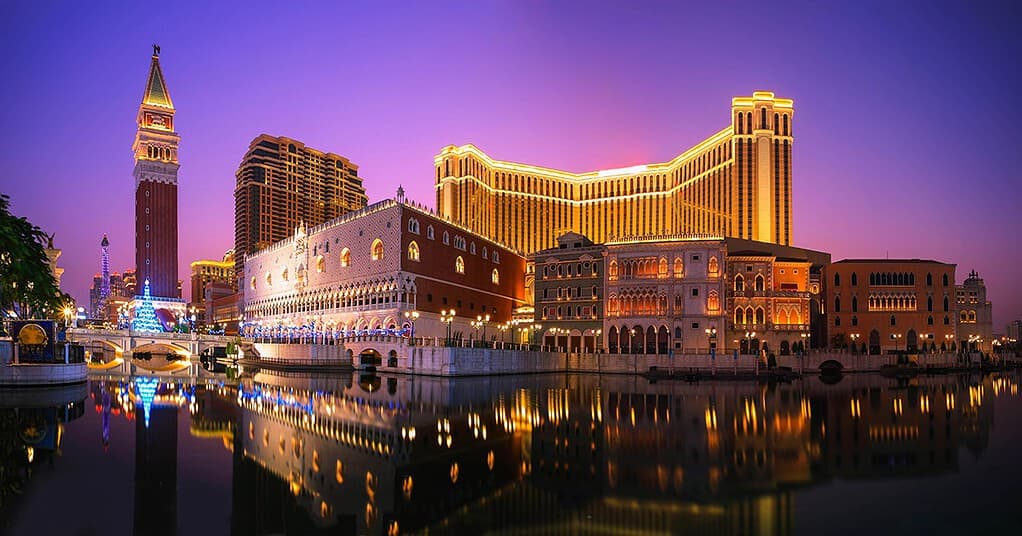
2. Macao SAR🇲🇴
Current International Dollars: 134,141 | Click To View GDP & Economic Data
Just a few years ago, many were betting that the Las Vegas of Asia was on its way to becoming the richest nation in the world—it encountered a few bumps along the road. Formerly a colony of the Portuguese Empire, the gaming industry was liberalized in 2001 this special administrative region of the People’s Republic of China has seen its wealth growing at an astounding pace. With a population of about 700,000, and more than 40 casinos spread over a territory of about 30 square kilometers, this narrow peninsula just south of Hong Kong became a money-making machine.
That, at least, was until the machine started losing money rather than making it. When Covid struck, global traveling came to a halt, and for a while Macao even slipped out of the 10 richest nations ranking. Since then, Macao has returned to business as —and then some. Its per-capita purchasing power was about $125,000 in 2019—it is even higher today.
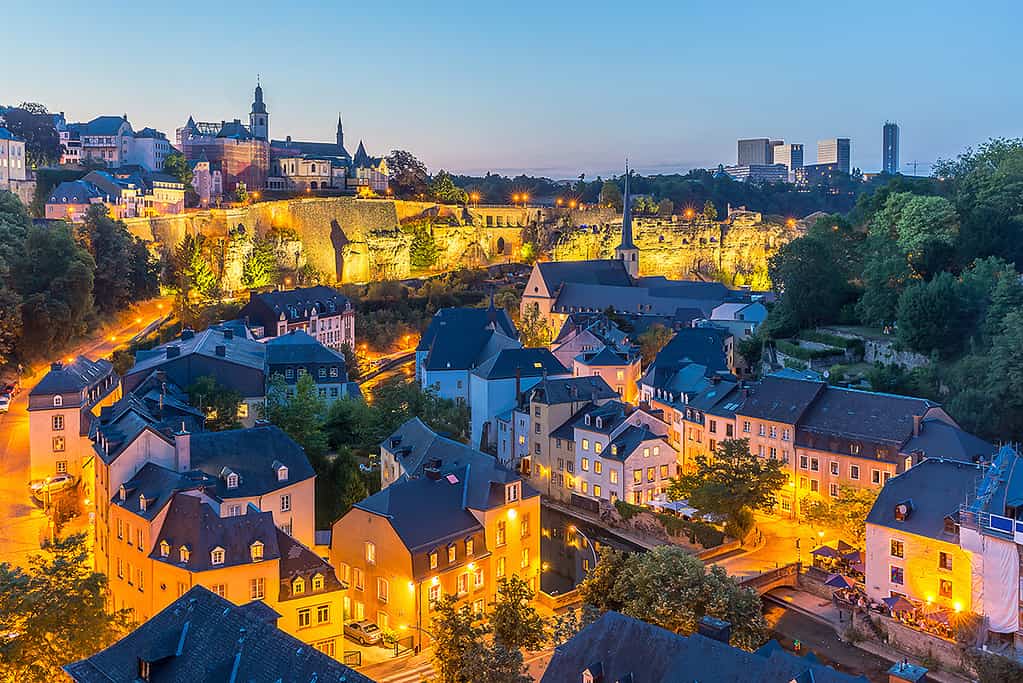
1. Luxembourg🇱🇺
Current International Dollars: 143,743 | Click To View GDP & Economic Data
You can visit Luxembourg for its castles and beautiful countryside, its cultural festivals or gastronomic specialties. Or you could just set up an offshore account through one of its banks and never set foot in the country again. Doing so would be a pity: situated at the very heart of Europe, this nation of close to 670,000 has plenty to offer, both to tourists and citizens. Luxembourg uses a large share of its wealth to deliver better housing, healthcare and education to its people, who by far enjoy the highest standard of living in the Eurozone.
While the global financial crisis and pressure from the EU and OECD to reduce banking secrecy may have had little impact on Luxembourg’s economy, the coronavirus outbreak forced many businesses to close and cost workers their jobs. Yet, the country has weathered the pandemic better than most of its European neighbors: its economy rebounded from -0.9% growth in 2020 to over 7% growth in 2021. Unfortunately, due to high interest rates, the war in Ukraine, and a broader deterioration of the economic conditions in the Eurozone, that rebound did not last long: the economy grew by just 1.3% in 2022 and even contracted by 1% in 2023 (although it is projected to grow by 1.2% this year.)
Still, weak economic growth may not be worth complaining when your living standards are this high: Luxembourg topped the $100,000 mark in per capita GDP in 2014 and has never looked back ever since.
World’s Richest Countries 2024
| Rank | Country/Territory | GDP-PPP per capita ($) |
| 1 | 🇱🇺Luxembourg | 143,743 |
| 2 | 🇲🇴Macao SAR | 134,141 |
| 3 | 🇮🇪Ireland | 133,895 |
| 4 | 🇸🇬Singapore | 133,737 |
| 5 | 🇶🇦Qatar | 112,283 |
| 6 | 🇦🇪United Arab Emirates | 96,846 |
| 7 | 🇨🇭Switzerland | 91,932 |
| 8 | 🇸🇲San Marino | 86,989 |
| 9 | 🇺🇸United States | 85,373 |
| 10 | 🇳🇴Norway | 82,832 |
| 11 | 🇬🇾Guyana | 80,137 |
| 12 | 🇩🇰Denmark | 77,641 |
| 13 | 🇧🇳Brunei Darussalam | 77,534 |
| 14 | 🇹🇼Taiwan | 76,858 |
| 15 | 🇭🇰Hong Kong SAR | 75,128 |
| 16 | 🇳🇱Netherlands | 74,158 |
| 17 | 🇮🇸Iceland | 73,784 |
| 18 | 🇸🇦Saudi Arabia | 70,333 |
| 19 | 🇦🇹Austria | 69,460 |
| 20 | 🇸🇪Sweden | 69,177 |
| 21 | 🇦🇩Andorra | 69,146 |
| 22 | 🇧🇪Belgium | 68,079 |
| 23 | 🇲🇹Malta | 67,682 |
| 24 | 🇩🇪Germany | 67,245 |
| 25 | 🇦🇺Australia | 66,627 |
| 26 | 🇧🇭Bahrain | 62,671 |
| 27 | 🇫🇮Finland | 60,851 |
| 28 | 🇨🇦Canada | 60,495 |
| 29 | 🇫🇷France | 60,339 |
| 30 | 🇰🇷South Korea | 59,330 |
| 31 | 🇬🇧United Kingdom | 58,880 |
| 32 | 🇨🇾Cyprus | 58,733 |
| 33 | 🇮🇹Italy | 56,905 |
| 34 | 🇮🇱Israel | 55,533 |
| 35 | 🇦🇼Aruba | 54,716 |
| 36 | 🇯🇵Japan | 54,184 |
| 37 | 🇳🇿New Zealand | 53,797 |
| 38 | 🇸🇮Slovenia | 53,287 |
| 39 | 🇰🇼Kuwait | 52,274 |
| 40 | 🇪🇸Spain | 52,012 |
| 41 | 🇱🇹Lithuania | 50,600 |
| 42 | 🇨🇿Czech Republic | 50,475 |
| 43 | 🇵🇱Poland | 49,060 |
| 44 | 🇵🇹Portugal | 47,070 |
| 45 | 🇧🇸The Bahamas | 46,524 |
| 46 | 🇭🇷Croatia | 45,702 |
| 47 | 🇭🇺Hungary | 45,692 |
| 48 | 🇪🇪Estonia | 45,122 |
| 49 | 🇵🇦Panama | 44,797 |
| 50 | 🇸🇰Slovak Republic | 44,081 |
| 51 | 🇹🇷Türkiye | 43,921 |
| 52 | 🇵🇷Puerto Rico | 43,219 |
| 53 | 🇷🇴Romania | 43,179 |
| 54 | 🇸🇨Seychelles | 43,151 |
| 55 | 🇱🇻Latvia | 41,730 |
| 56 | 🇬🇷Greece | 41,188 |
| 57 | 🇴🇲Oman | 39,859 |
| 58 | 🇲🇾Malaysia | 39,030 |
| 59 | 🇰🇳St. Kitts and Nevis | 38,870 |
| 60 | 🇷🇺Russia | 38,292 |
| 61 | 🇲🇻Maldives | 37,433 |
| 62 | 🇧🇬Bulgaria | 35,963 |
| 63 | 🇰🇿Kazakhstan | 34,534 |
| 64 | 🇹🇹Trinidad and Tobago | 32,685 |
| 65 | 🇲🇺Mauritius | 32,094 |
| 66 | 🇨🇱Chile | 31,005 |
| 67 | 🇺🇾Uruguay | 30,170 |
| 68 | 🇲🇪Montenegro | 29,696 |
| 69 | 🇨🇷Costa Rica | 28,558 |
| 70 | 🇷🇸Serbia | 27,985 |
| 71 | 🇦🇬Antigua and Barbuda | 27,309 |
| 72 | 🇩🇴Dominican Republic | 27,120 |
| 73 | 🇱🇾Libya | 26,456 |
| 74 | 🇦🇷Argentina | 26,390 |
| 75 | 🇲🇽Mexico | 25,963 |
| 76 | 🇧🇾Belarus | 25,685 |
| 77 | 🇬🇪Georgia | 25,248 |
| 78 | 🇨🇳China | 25,015 |
| 79 | 🇹🇭Thailand | 23,401 |
| 80 | 🇲🇰North Macedonia | 22,249 |
| 81 | 🇬🇩Grenada | 21,799 |
| 82 | 🇦🇲Armenia | 21,746 |
| 83 | 🇮🇷Islamic Republic of Iran | 21,220 |
| 84 | 🇧🇷Brazil | 20,809 |
| 85 | 🇦🇱Albania | 20,632 |
| 86 | 🇧🇦Bosnia and Herzegovina | 20,623 |
| 87 | 🇧🇧Barbados | 20,592 |
| 88 | 🇧🇼Botswana | 20,097 |
| 89 | 🇨🇴Colombia | 19,770 |
| 90 | 🇹🇲Turkmenistan | 19,729 |
| 91 | 🇱🇨St. Lucia | 19,718 |
| 92 | 🇬🇦Gabon | 19,452 |
| 93 | 🇦🇿Azerbaijan | 19,328 |
| 94 | 🇻🇨St. Vincent and the Grenadines | 19,196 |
| 95 | 🇸🇷Suriname | 18,928 |
| 96 | 🇬🇶Equatorial Guinea | 18,378 |
| 97 | 🇲🇩Moldova | 17,902 |
| 98 | 🇪🇬Egypt | 17,614 |
| 99 | 🇫🇯Fiji | 17,403 |
| 100 | 🇵🇼Palau | 17,381 |
| 101 | 🇮🇩Indonesia | 16,861 |
| 102 | 🇽🇰Kosovo | 16,775 |
| 104 | 🇵🇪Peru | 16,631 |
| 105 | 🇲🇳Mongolia | 16,504 |
| 105 | 🇩🇿Algeria | 16,483 |
| 106 | 🇿🇦South Africa | 16,424 |
| 107 | 🇵🇾Paraguay | 16,291 |
| 108 | 🇧🇹Bhutan | 15,978 |
| 109 | 🇻🇳Vietnam | 15,470 |
| 110 | 🇺🇦Ukraine | 15,464 |
| 111 | 🇩🇲Dominica | 15,280 |
| 112 | 🇪🇨Ecuador | 14,485 |
| 113 | 🇹🇳Tunisia | 13,645 |
| 114 | 🇯🇲Jamaica | 13,543 |
| 115 | 🇸🇿Eswatini | 12,637 |
| 116 | 🇸🇻El Salvador | 12,561 |
| 117 | 🇯🇴Jordan | 12,402 |
| 118 | 🇵🇭Philippines | 12,192 |
| 119 | 🇳🇦Namibia | 12,008 |
| 120 | 🇮🇶Iraq | 11,937 |
| 121 | 🇧🇿Belize | 11,320 |
| 122 | 🇬🇹Guatemala | 11,006 |
| 123 | 🇲🇦Morocco | 10,947 |
| 124 | 🇺🇿Uzbekistan | 10,936 |
| 125 | 🇳🇷Nauru | 10,823 |
| 126 | 🇧🇴Bolivia | 10,693 |
| 127 | 🇨🇻Cabo Verde | 10,304 |
| 128 | 🇱🇦Lao P.D.R. | 10,242 |
| 129 | 🇮🇳India | 10,123 |
| 130 | 🇧🇩Bangladesh | 9,416 |
| 131 | 🇻🇪Venezuela | 8,486 |
| 132 | 🇰🇭Cambodia | 8,287 |
| 133 | 🇳🇮Nicaragua | 8,137 |
| 134 | 🇩🇯Djibouti | 7,707 |
| 135 | 🇲🇷Mauritania | 7,680 |
| 136 | 🇭🇳Honduras | 7,503 |
| 137 | 🇹🇴Tonga | 7,462 |
| 138 | 🇬🇭Ghana | 7,156 |
| 139 | 🇦🇴Angola | 7,153 |
| 140 | 🇰🇪Kenya | 6,976 |
| 141 | 🇵🇰Pakistan | 6,955 |
| 142 | 🇨🇮Côte d’Ivoire | 6,860 |
| 143 | 🇰🇬Kyrgyz Republic | 6,790 |
| 144 | 🇼🇸Samoa | 6,721 |
| 145 | 🇳🇬Nigeria | 6,340 |
| 146 | 🇲🇭Marshall Islands | 6,313 |
| 147 | 🇹🇻Tuvalu | 6,056 |
| 148 | 🇹🇯Tajikistan | 5,832 |
| 149 | 🇲🇲Myanmar | 5,203 |
| 150 | 🇳🇵Nepal | 5,032 |
| 151 | 🇨🇲Cameroon | 4,842 |
| 152 | 🇨🇬Republic of Congo | 4,740 |
| 153 | 🇫🇲Micronesia | 4,691 |
| 154 | 🇸🇳Senegal | 4,661 |
| 155 | 🇧🇯Benin | 4,558 |
| 156 | 🇿🇲Zambia | 4,361 |
| 157 | 🇸🇹São Tomé and Príncipe | 4,238 |
| 158 | 🇪🇹Ethiopia | 4,020 |
| 159 | 🇹🇱Timor-Leste | 3,767 |
| 160 | 🇹🇿Tanzania | 3,746 |
| 161 | 🇰🇮Kiribati | 3,614 |
| 162 | 🇵🇬Papua New Guinea | 3,534 |
| 163 | 🇰🇲Comoros | 3,532 |
| 164 | 🇸🇩Sudan | 3,443 |
| 165 | 🇷🇼Rwanda | 3,367 |
| 166 | 🇬🇳Guinea | 3,366 |
| 167 | 🇺🇬Uganda | 3,345 |
| 168 | 🇬🇼Guinea-Bissau | 3,239 |
| 169 | 🇱🇸Lesotho | 3,227 |
| 170 | 🇭🇹Haiti | 3,108 |
| 171 | 🇬🇲The Gambia | 2,993 |
| 172 | 🇬🇲Zimbabwe | 2,975 |
| 173 | 🇻🇺Vanuatu | 2,939 |
| 174 | 🇹🇬Togo | 2,911 |
| 175 | 🇻🇺Burkina Faso | 2,781 |
| 176 | 🇲🇱Mali | 2,714 |
| 177 | 🇸🇧Solomon Islands | 2,713 |
| 178 | 🇹🇩Chad | 2,620 |
| 179 | 🇸🇱Sierra Leone | 2,189 |
| 180 | 🇸🇴Somalia | 2,062 |
| 181 | 🇾🇪Yemen | 1,996 |
| 182 | 🇲🇬Madagascar | 1,979 |
| 183 | 🇱🇷Liberia | 1,882 |
| 184 | 🇲🇼Malawi | 1,712 |
| 185 | 🇳🇪Niger | 1,675 |
| 186 | 🇲🇿Mozambique | 1,649 |
| 187 | 🇨🇩Democratic Republic of the Congo | 1,552 |
| 188 | 🇨🇫Central African Republic | 1,123 |
| 189 | 🇧🇮Burundi | 916 |
| 190 | 🇸🇸South Sudan | 455 |
| — | 🇦🇫Afghanistan 🇪🇷Eritrea 🇱🇧Lebanon 🇱🇰Sri Lanka 🇸🇾Syria 🇵🇸West Bank and Gaza |
N/A |
Source: International Monetary Fund, World Economic Outlook April 2024. Values are expressed in current international dollars, reflecting the corresponding exchange rates and PPP adjustments.
